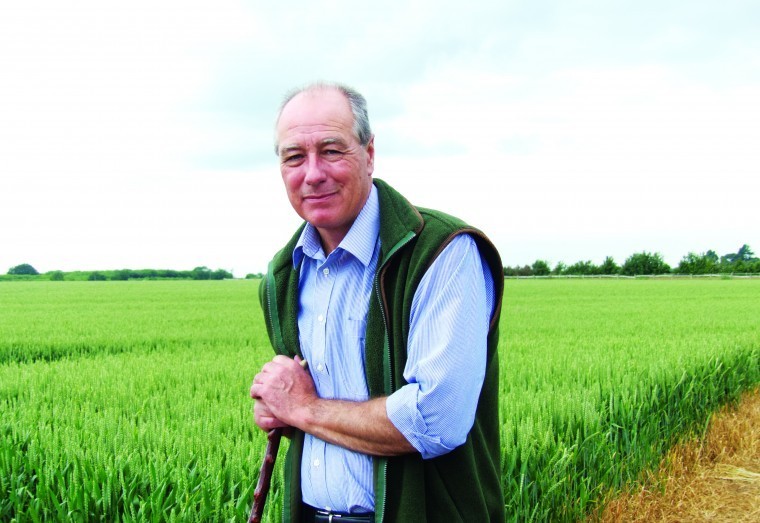The earliest start on 7 July, the latest finish on 23 September bringing up the longest harvest I have endured. Definitely something to talk about but better in the past as a memory rather than the present.
Most of you know the weather story with little sun and plenty of rain and damp days making August and early September a dreary summer. None of the beans have been below 17.5% moisture and most above 18.5% with all the problems of drying in a continuous flow dryer without cracking them with too higher a temperature.
Some will have to go through twice to get below 15%. I am not too sure why I am trying that hard as the staining from partially open pods means they are all destined for feed. Bruchid beetle damage is completely random with some clean with no damage and others holed severely even where a full insecticide programme has been applied.
The other problem with the extended harvest has been the green growth in the bottom of crops. Every time we have determined to spray them with glyphosate the weather has improved, we have cut some beans and put off spraying the rest. In hindsight, this was a mistake as the green has got worse and with damp days the mulch going round the returns has blocked sieves and stuck to every grain preparing surface in the combines. I have spent more time inside combines cleaning them out than I care to dwell on.
Yields were reasonable with the winter and spring beans both averaging four tonnes a hectare. This was not too dissimilar to the oilseed rape yields although with a very different value and financial outcome.
As those who have followed these articles will know, we have tried a range of measures from different drills, depths of drilling, plant density increases, drilling dates etc – all to no avail in lifting bean yields and to little effect in controlling grass weeds either.
Still as I mentioned in an earlier article with the banning of applying plant protection products to nitrogen fixing crops on environmental focus areas, we will not be growing them this coming year. That is a shame from the environmental perspective as there are the benefits to pollinators that will be lost. It has also been fascinating to see house martins in their hundreds gorging on the insects across these late cut stubbles before departing south to their wintering grounds.
There have been other reasons why we have been late finishing combining and one of them is obvious from the photographs above which were taken on the last day of combining wheat on the way back to Down Court. With today’s 30 and 40 feet headers on four wheel trailers we do not tow them behind the combines but use tractors and send them ahead so that we cause less congestion. That works fine but unfortunately this year we had one serious incident with a van in a lane near Doddington. The van driver escaped completely unharmed although it did take three hours to get the van back off the header.
When back on level ground we changed the blown out front near side wheel and the van was driven to the owner’s yard with our combine escort vehicle in front. Although we cut the reel bar off with a disc cutter there was at least a metre in the van roof and half a metre sticking out which did look a little odd. I am sure South East Farmer could run a caption competition with those photographs both from the perspective of the van driver and the tractor driver.
The care taken in removing the van did mean the header was not written off but the bill for repair is serious. I think headers will follow the combines in future, whether or not it causes more congestion. At least other road users are safe behind us and we will have working headers when we arrive at the next field.
The one benefit of the unsettled weather has been newly sown oilseed rape has emerged well and the dull weather has meant there is very little cabbage stem flea beetle damage. Conversely where we have struggled to get seed beds rolled behind the drills due to the wet weather slugs have been serious and we have redrilled the odd field.
Looking across the 1,200 acres most of it looks well and is growing away. After the wet August I had expected a dry September with difficult conditions for oilseed rape establishment which just goes to show that past experience is no way to predict the future. But no doubt the weather will even out – just not quite yet.
After taking August off, our politicians are back with to work, with Brexit still dominating everything in and outside of government. One of the most worrying aspects of the plethora of announcements was the paper published on immigration post Brexit and the renewed pledge to see it in the tens of thousands. I realise that it all depends how you measure it and that seems to be a moving feast for endless debate.
However to run a growing economy with an ageing population, even with increasing the retiring age we need immigration in the region of 200,000 arriving per year. For agriculture and the food sector it is about a picking and packing work force which cannot yet be replaced by robotics. In the general economy it is everything from the service sector, through construction to the care industry and health service. While leaving the European Union, in my opinion, will have at least a short term negative impact on the economy it will probably even out in the longer run, all other things being equal. Strangling the labour supply is not keeping things equal: it is more a case of political self harm.




